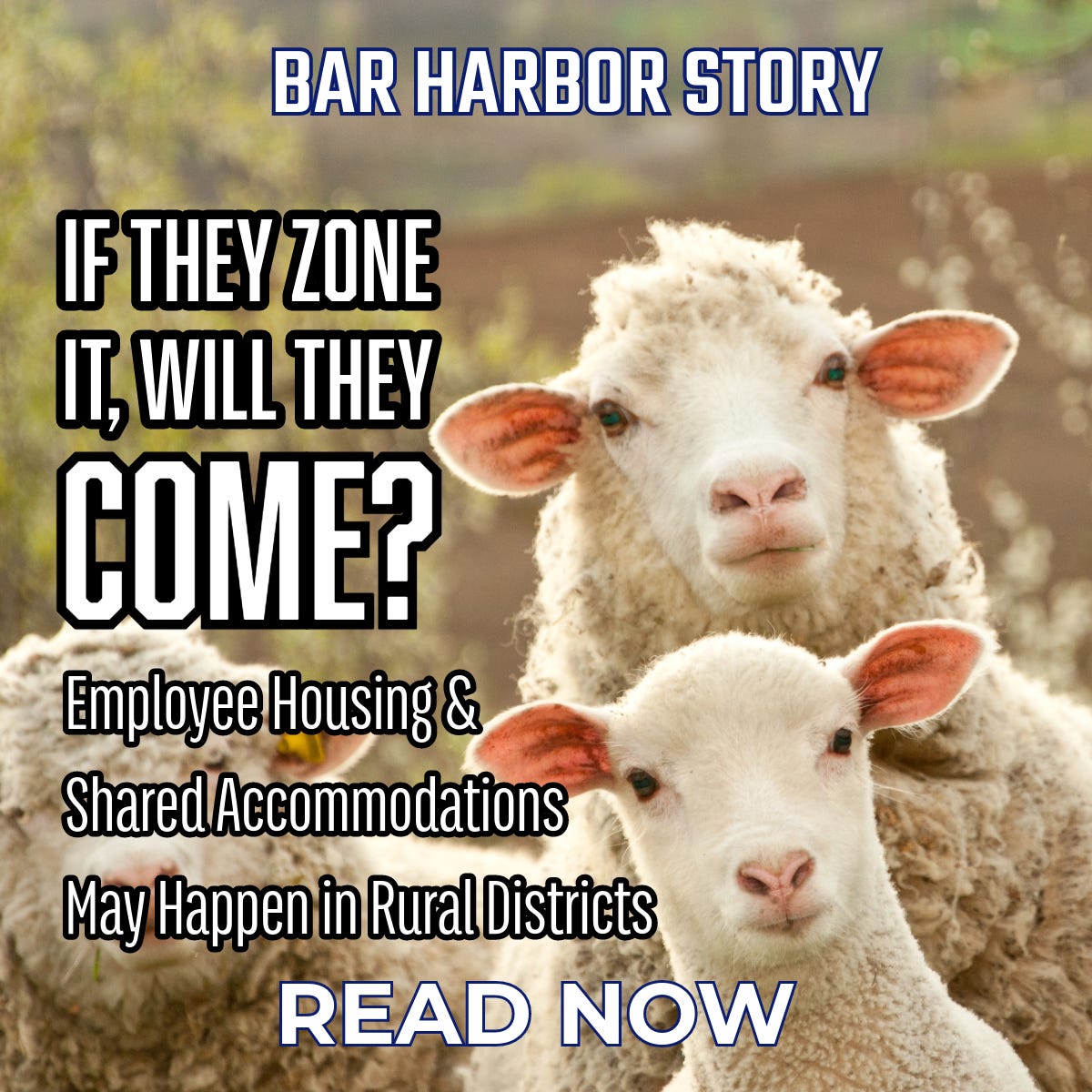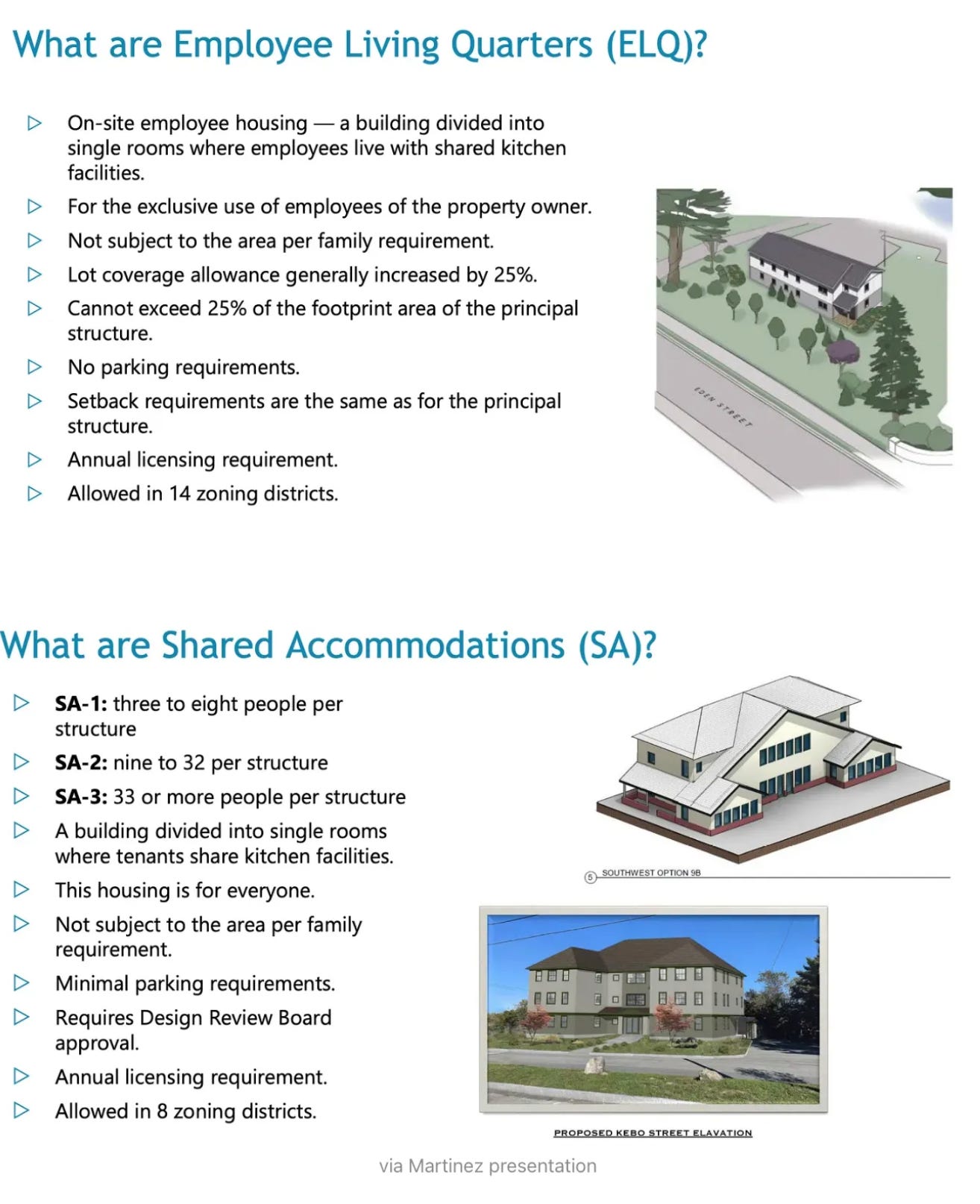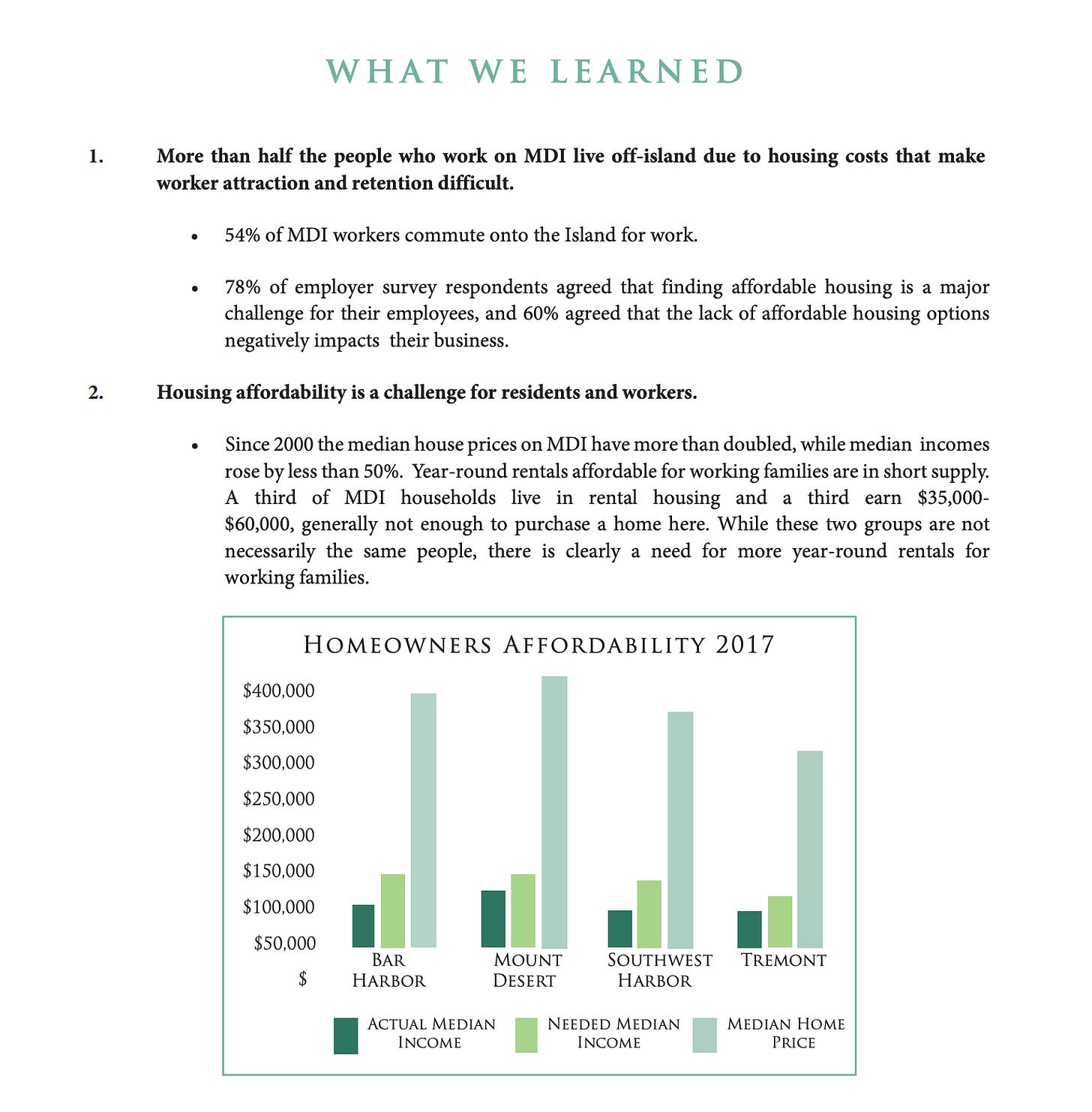If They Zone It, Will They Come?
Employee Housing And Shared Accommodations Survey Results Coming In For Rural Districts
BAR HARBOR—When Glenon Friedmann, wanted to build a few cabins for workers at the Bar Harbor Farm at 115 Gilbert Farm Road, she couldn’t. The farm is in the Town Hill rural district, one of Bar Harbor’s 40 land use zones, but more importantly one where employee housing in cabins isn’t an allowed use.
Back in February, Friedmann (wife of Town Councilor Gary Friedmann) went before the town’s Planning Board and asked that farm employee housing be added as an allowed use in the zone.
At the time, Bar Harbor Planning Director Michele Gagnon had said that the planning staff has been talking about expanding the district where that type of dwelling was allowed. Or a similar use could potentially be added to the Town Hill Rural district.
“Employee housing is needed for more than restaurants and downtown shops,” she’d said.
Staff Planner Cali Martinez spoke to the Planning Board Wednesday, September 6, about potentially expanding the areas in town where shared accommodations and employee housing can be built.
It’s a project she’s been working on for months and would require changes to the town’s land use ordinance.
At the September 6 meeting, Martinez discussed the feedback she’s received so far from a rural employers survey. She posted the survey a month ago. It expires September 11. Her goal was to get 10 or 15 responses. She has 12 so far.
“I know it seems small, but I think for a first step. I got some good data,” to help guide the staff, she said.
There are multiple types of shared accommodations (SA). SA-1s are the size of a house with 1-8 rooms, while an SA-2 would be more rooms, and so on.
Two-thirds of those answering the survey said they were not interested or were unsure about having shared accommodations. Of those answers, employers said they were worried about potential unhealthy living environments, didn’t have money to create co-housing, or were too small to create this.
Martinez recommended that the Planning Board doesn’t propose SA-1s, but discuss the idea again during listening sessions in October. Those sessions will be for rural employers and open to the public. She said that having SAs in that district can be rehashed at those meetings.
“Maybe you’re finding it isn’t as bad as a problem, except for the farms, that we think it is,” Planning Board Chair Millard Dority said about the need.
Martinez said that of the businesses responding to the survey 42% were commercial farms or gardens or nurseries; 25% were restaurant/retail; and 17% were campgrounds and/or lodgings.
Of those respondents, they said that 83% of employees use their personal vehicle. Parking requirements are one of the things that would have to be determined. She recommended one-car per bedroom. Planning Board member Joe Cough cautioned against that. He asked what if a person put in a six-person bedroom with just one parking space for that bedroom. Dority liked Martinez’ idea of incentives to decrease required parking spaces.
Planning Board member J. Clark Stivers wondered if they have to worry about parking spaces in that area where farms have large open spaces. Gagnon suggested having a standard that is less structured for the area, saying, “We don’t want the creation of impervious surface.” Instead, they could focus on safety and keeping cars out of the road.
Some businesses, in that area, aren’t agricultural uses with that extra space.
“It’s certainly an issue we’re going to need to face,” Dority said. They decided to talk more about it.
Martinez also asked rural employers how many employees they’d like to house, and 67% said they’d like to house 1-8 employees. About half of the respondents said that they did not struggle with lot coverage.
She hopes to provide a simple summary report to the board at its next meeting, and also send it to responding employers, and inform those employers that there will be a listening session in mid-October.
WORRIES ABOUT SHARED ACCOMMODATIONS AND EMPLOYEE HOUSING SITUATIONS
Gagnon and Martinez mentioned that at the council meeting on September 5 that Appeals Board Vice Chair Anna Durand and Town Councilor Maya Caines touched upon how dormitory style housing “could be geared toward Black and brown people,” in a negative way, Martinez said.
The discussion touched on how if employees are housed by employers, does that make them trapped at their job, and does it make them unable to report unsafe living conditions.
By encouraging employee living quarters and shared accommodations in rural districts does that isolate seasonal workers who often do not have personal vehicles was another topic touched on at the Town Council meeting.
“One thing that is common is that people who rent are scared” about the ramifications of complaining about those accommodations. This is also true about employees housed by employers, Gagnon said.
“The concern is to not develop slum housing,” Vice Chair Ruth Eveland said. “There should be no perception that it is sub-standard housing in any fashion. I think that’s the critical point.”
Employee housing has a yearly licensing that involves a public hearing.
Eveland said that the other aspect is that some of the housing that currently exists is inadequate and people who live there are afraid of losing that housing by complaining. This echoes Caines’ statements at the Town Council meeting on September 5. Eveland said she’s heard vivid descriptions of some of these spaces.
When you come to planning board for an approval and permit, depending on the level for what you are proposing, Gagnon said, you don’t come back once you have that permit. But with employee accommodations there is a licensing component to it. There is now a yearly ability for people to talk if there is an issue with the accommodation.
HOW PEOPLE CAN NOTIFY THE TOWN IF THERE ARE ISSUES
Whether or not people would feel comfortable talking in a public hearing was not addressed.
However, in response to an email about ways that tenants can notify the town of issues, Martinez said, “Complaining about an ELQ or SA is treated no differently than complaining about any other development in town in the sense that the complaint will be considered and looked into to see if there is a valid violation to one of the town ordinances.
“There are two separate licensing ordinances for ELQ and SA that are meant to protect against unsafe/unhealthy living conditions (Chapter 76 & Chapter 168). Both of those ordinances describe the violation process and what happens if an ELQ or SA receives three violations issued by the CEO. A third violation would trigger a town council public hearing to determine if the license should be revoked. This is a separate process than the license or annual relicensing public hearing.
“But overall, anyone can provide a complaint to our office at any time via email, writing, call, or in-person. A complaint could potentially lead to a violation after the Health Officer (Mike Gurtler) or the CEO (Angie Chamberlain) inspects the complaint further.”
LINKS TO LEARN MORE
Check out a 2018 housing study conducted by the Island Housing Trust
https://barharborstory.substack.com/p/martinez-wants-to-make-sure-community
TO CONTACT MEMBERS OF THE PLANNING OR CODE ENFORCEMENT OFFICE
The general number – 288-3329
Click on the staff member’s name for their email.







